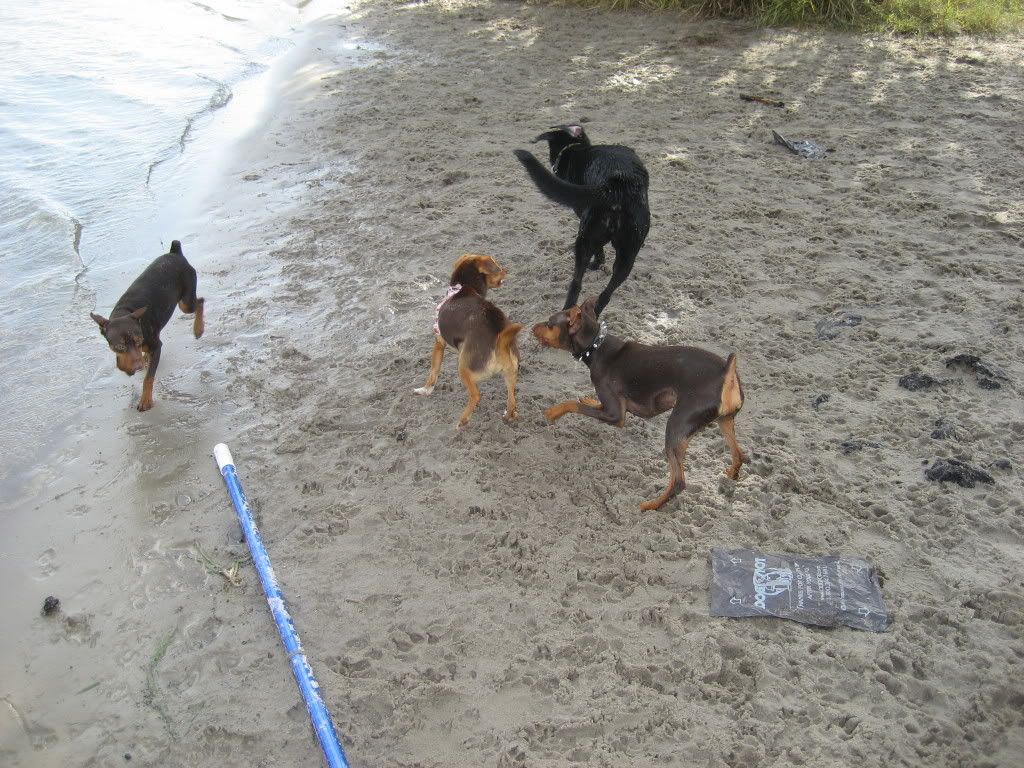
Exact methods of communication between dogs have long since been a mystery. For example: properly socialized dogs meeting for the first time can soundlessly evaluate each other in a short time. They can do this through an exchange of glances which will also decide if they will be friends or enemies. Dogs do this without any sophistiated verbal language. Dogs use various body parts to communicate with each other: various postures, and facial expressions. In most cases facial expressions and body language complement the impact of vocals (i.e. barks and growls). Odor also plays a signifiicant part in dogs' recogniton and interaction.
Body Language.
Dogs communicate Dominance by:
Humping.
Looming Over.
Urinating by lifting leg.
Lifting Tail.
Resting head on another dog's back.
Placing paws on another's back
Dogs communicate Deferrence and Submission by:
Urinating by Squatting.
Rolling Over
Tilting (or turning away) neck/head.
Hanging head.
Tucking in tail
Other gestures inlude:
Caution: Wagging tail (slowly) in horizontal motion.
Fear: Tail is held low or tuked
Content: Tail is relaxed (and stationary).
Excitement: Randomly wagging tail .
Threat: Tensing muscles and raising hackles
Invitation to play: Head low with elevated rump.
Facial Expressions.
Dogs exhibit different kinds of facial expressions. These expressions can be understood by other dogs of thesame and different species. To intimidate another, a dog would stare with it's eyes wide open, ears pointing forward, and teeth bared. A dog in a relaxed mood will have its eyes in a more relaxed mood ears relaxed (flopped), having an expression somewhat like a smile: mouth open, lips slightly back, and tongue hanging flabbily from the side of the mouth. In an anxious state, the dog would glance away and its ears may fall to the side of the head or may be flopped. While clenching its teeth, the dog's lips will be rigidly drawn back. Its tongue may or may not be exposed (depending on if it is lip-liking). If afraid , a dog would either stare forward or away with widely dilated pupils and ears pressed (back close to the head). The dog may also pant or breath hard (mouth may be slightly open or tightly closed); meanwhile, the sinews show in the cheeks through tensing of its jaws. They communicate their moods and intentions through combinations of these. Dogs' expressions may often appear undecided. It may be a mixture of completely different expressions.
Odor.
Odor communiation between dogs is fairly ambiguous. Dogs have an exquisitely powerful sense of smell. There is a likelihood that they learn about other dogs from smell. This may acount for their random sniffing habit. It is unclear what sort of information passes between dogs via this medium. It is well known however, that intact male dogs typically smell "male” (because of male sex pheromones) and that neutered males do not have this characteristic smell. The neutering process involves changing the olfactory signals the dog emits and therefore other dog's perception of it. It is possible that the "non-male" smell of neutered dogs may be thesame as that of the interval between heat periods (diestrus) or that of a neutered female dog. Odor causes differences in interactions between dogs. For example a meeting between an intact and a neutral male may not be confrontational because the intat dog does not pereive a rival- he may believe the nutered dog is female!



 DEWCLAW: The fifth claw, very small and placed above the others.
DEWCLAW: The fifth claw, very small and placed above the others.